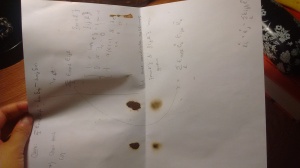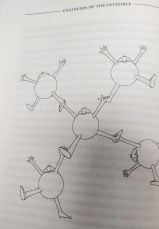Excerpted from K.C. Cole’s LA Times article, “In Patterns, Not Particles, Physicists Trust”:
If pinning down reality is a matter of seeing consistent patterns, then humans are well equipped, because ferreting out patterns is what we do best: We see patterns in the stars, on the moon, in the cracks in the ceiling, in the orbits of the planets.
Arranging things into patterns makes them easier to understand. But only sometimes do the patterns point out “real” relationships.
The orbits of the planets are connected by a single law of gravity, but the stars in the Big Dipper are connected only by our imagination. Both are real, but the motions of the planets tell us things about nature; the dipper in the sky tells us only about ourselves. All too often, we mistake the “real world” for one that exists mainly in the human brain.
“Having lost the gods, we fall in love with the beautiful idols we can raise in their places,” writes Amherst College physicist Arthur Zajonc in his book, “Catching the Light.” “Atoms, quarks, tiny black holes . . . they are reified, garlanded, and dragged forward to assume a place in the temple. Calling them real, we animate them. . . .”
In the end, finding out what’s real may require redefining what we mean by reality. After all, science often requires that we go beyond sense impressions (as well as common sense). No matter how real or unreal something might seem, it ultimately has to stand up to experimental scrutiny and theoretical consistency.
The chair is real because you can sit on it. Newton’s laws of gravity are real because they keep the planets in orbit around the sun. Real enough to command our attention, in any event. Real enough so that they can’t be easily ignored. Or as Weinberg puts it: “When we say that a thing is real, we are simply expressing a sort of respect.”











